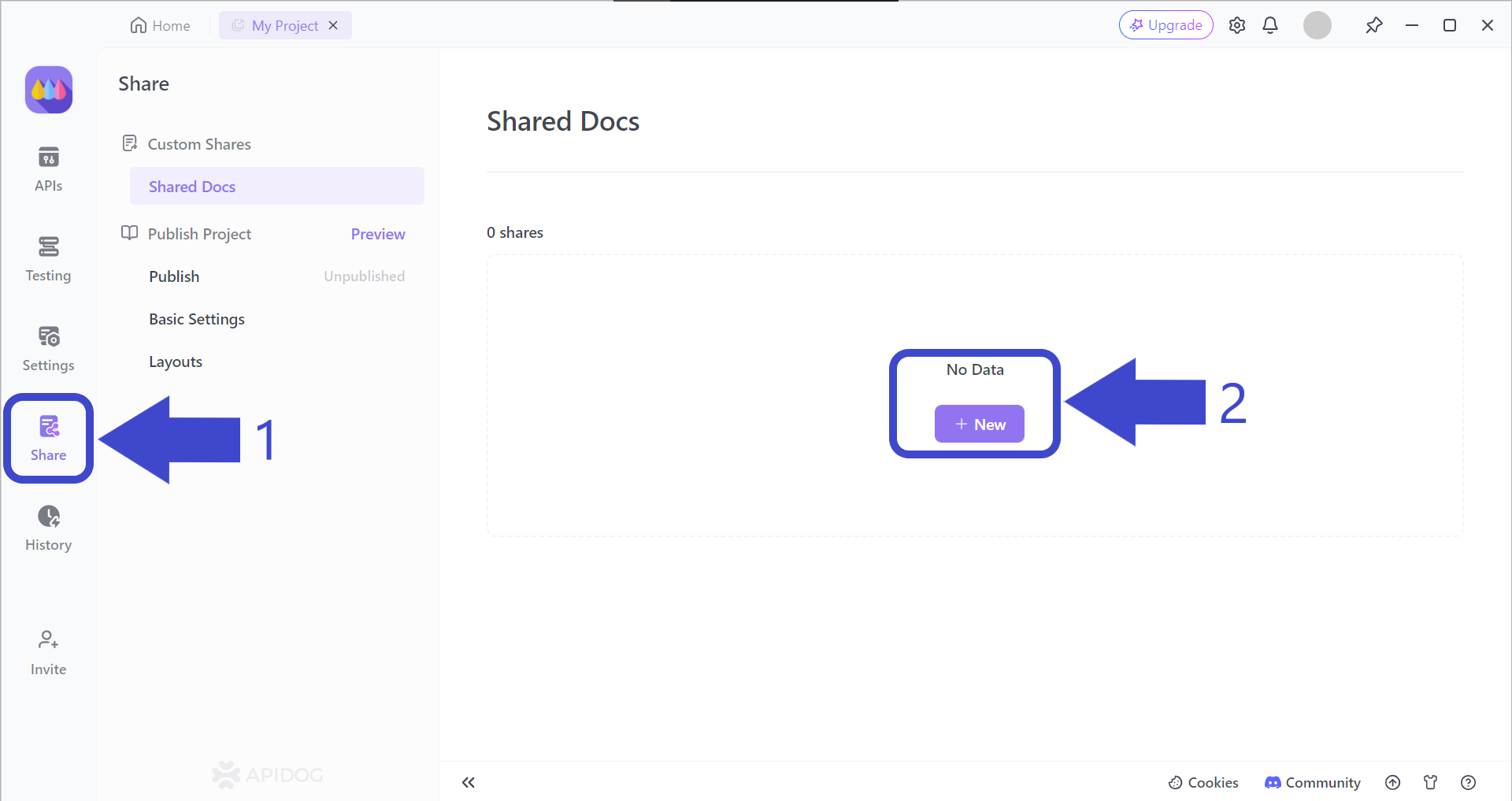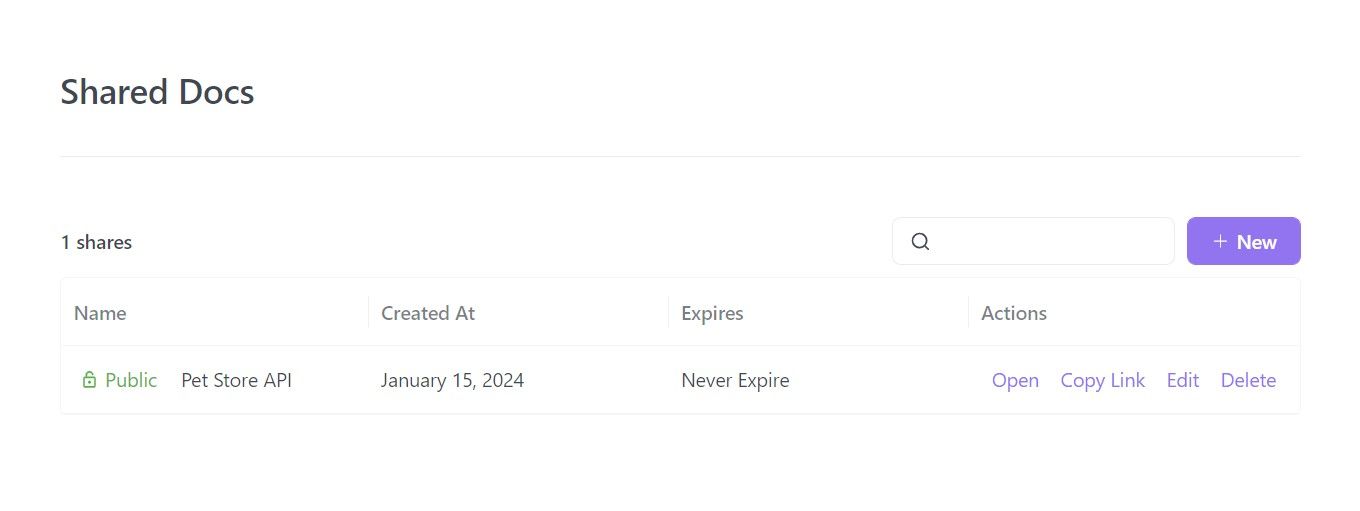In the realm of APIs, where applications exchange data and functionality, clear communication is paramount. Enter API references and documentation – both crucial resources for developers. But what sets them apart? This guide dives into the distinct roles of API references and documentation, helping you understand what each offers and when to reach for the right tool in your development toolbox.
If Apidog seems like a suitable API tool for you, start streamlining your API development today for free by clicking the button below! 👇

What is an API Reference?
API references are detailed technical dictionaries provided by API developers to ensure that consumers can understand how to operate the API.
Key Elements of Any API Reference
Function-Centric Focus:
- Unlike API documentation, which offers a broader perspective, API references concentrate on the nitty-gritty details of individual functions (methods) offered by the API.
- Imagine an API that provides functionalities for managing user accounts. The API reference wouldn't explain the entire user management system; instead, it would meticulously detail each function related to user accounts.
- This includes functions for creating new users, updating existing profiles, deleting accounts, or retrieving user information.
Technical Specifications Breakdown:
- Each function within the API reference is meticulously dissected, outlining its technical specifications. This breakdown typically includes:
- Function Name: A clear and descriptive name that identifies the function's purpose (e.g., "createUser," "updateUserEmail").
- Parameters: These are the inputs required by the function to perform its task. The reference specifies the data type (e.g., string, integer) and a description of each parameter. For instance, the "createUser" function might require parameters like username, password, and email address.
- Return Values: This details the data the function outputs after processing the request. The reference clarifies the format of the returned data (e.g., JSON object, string) and its structure, explaining what information it contains. Continuing the user creation example, the return value might be a JSON object containing the newly created user's ID and username.
- Data Formats: API references often specify the data formats used for both request and response messages. Common formats include JSON (JavaScript Object Notation) and XML (Extensible Markup Language). Defining these formats ensures both applications understand how to structure and interpret the exchanged data.
Purpose and Benefits:
- API references serve as a quick and efficient reference for developers who already have a grasp of the API's overall functionalities.
- Think of it as a cheat sheet that allows developers to look up specific methods, their syntax (how they are written), and the data structures involved (e.g., JSON objects) without needing to wade through extensive documentation.
- This streamlines the development process by allowing developers to find the technical details they need promptly, improving coding efficiency.
Real-world Examples of Good API References
Stripe
URL: https://docs.stripe.com/api
Renowned for its user-centric approach, Stripe's API reference boasts a sleek interface with explanations on the left and code snippets on the right. This side-by-side format fosters easy comprehension and allows developers to quickly grasp concepts and implement them in code.
Twilio
URL: https://www.twilio.com/docs

Another developer favorite, Twilio's documentation is meticulously structured and searchable. It offers a wealth of tutorials, tips, and best practices, empowering developers of all experience levels. The clear explanations and readily available code examples in various programming languages make it a breeze to get started with building applications using Twilio's API.
To learn how to create API references or learn more about what they are, click the link below!

What is an API Documentation?
API documentation, unlike an API reference, takes a broader approach. Imagine it as a comprehensive user manual for the API, guiding developers on how to effectively interact with it and leverage its functionalities.
While API references delve into the technical details of individual functions, API documentation offers a more holistic perspective. It includes the API reference information but expands upon it with additional explanations, usage guidelines, and best practices.
Key Components to API Documentation
1. Introduction:
This section provides a high-level overview of the API, introducing its purpose, target audience, and the functionalities it offers. It should be clear and concise, quickly capturing the developer's interest and conveying the value proposition of the API.
2. Getting Started:
This section guides developers through the initial setup process. It typically covers essential information like:
- Prerequisites: Any software, libraries, or tools needed to use the API.
- Sign-up Process: Instructions on creating an account or obtaining API credentials.
- Environment Setup: Steps for configuring development environments to interact with the API.
3. Authentication:
Many APIs require authentication mechanisms to control access and ensure security. This section explains the available authentication methods (e.g., API keys, OAuth) and provides step-by-step instructions on implementing them within an application.
It should also clarify any permissions associated with different authentication levels.
4. API Reference:
This section acts as the heart of the documentation, providing detailed information about the specific functionalities offered by the API. It typically includes:
- Function (or endpoint) definitions: Clear explanations of each function's purpose and its role within the API.
- Request Parameters: A breakdown of the data required by each function, including parameter names, data types (string, integer, etc.), and their descriptions.
- Response Formats: Explanations of the data structure and format of the response received from the API (e.g., JSON, XML).
- Error Codes: A comprehensive list of potential error codes developers might encounter, along with descriptions and troubleshooting steps for each error.
5. Examples and Tutorials:
Practical code examples showcasing how to interact with the API using different programming languages are highly valuable. These examples demonstrate real-world implementations and can be easily adapted by developers for their specific needs.
Some documentation might even include step-by-step tutorials that guide developers through specific use cases or complex functionalities offered by the API.
6. Versioning:
APIs often evolve, adding new features or modifying existing functionalities, therefore the documentation should clearly explain the API versioning scheme and how developers can specify the version they want to use.
Additionally, it should highlight any breaking changes introduced in newer versions to help developers adapt their code accordingly.
7. Additional Resources:
Links to relevant resources like community forums, FAQs, or support channels can be immensely helpful for developers, as these resources provide a platform for developers to ask questions, share experiences, and troubleshoot any challenges they face while using the API.
8. Maintainability:
API documentation is a living document that should be kept up-to-date with any changes or additions to the API, so regularly reviewing and updating the documentation ensures developers always have access to accurate and relevant information.
Real-world Examples of API Documentation
Dropbox
URL: https://www.dropbox.com/developers/documentation/http/documentation

Recognizing the importance of customization, Dropbox personalizes the API reference experience. Upon landing on the documentation page, developers can choose their preferred programming language. This tailored approach ensures developers receive the most relevant information for their specific needs.
Slack
URL: https://api.slack.com/reference

Understanding that developers come from all experience levels, Slack prioritizes beginner-friendliness in its documentation. They utilize clear, concise language and break down concepts into easily digestible chunks. Additionally, difficulty levels are labeled for each subtopic, guiding users toward content that best suits their needs.
To learn more about what excellent API documentation looks like, make sure to refer to this article!

Tabulated Comparison Between API References VS. Documentation
| Feature | API Reference | API Documentation |
|---|---|---|
| Purpose | Provides a quick reference for developers familiar with the API. | Offers a broader understanding of the API and guides effective usage. |
| Scope | Narrow - Focused on individual functions (or methods). | Broad - Covers API reference details and additional information. |
| Content | Function names, parameters, return values, and data formats (including requests and responses). | Usage guidelines, authentication methods, error handling, best practices, code samples, and tutorials |
| Analogy | Dictionary for the API. | User manual for the API. |
| Example | Details for a function that retrieves weather data (such as name, parameters, and return format). | Explains how to use the weather data retrieval API, including authentication, error handling, and code examples. |
| Benefits | Faster development and enhanced features | Faster development, reduced costs, and simplified integration |
Apidog - Create Elegant API Documentation for Consumers
API documentation can be a troublesome task to deal with if you have to write it from scratch. You need to remember and insert all the details regarding your API - but can you recall all this information yourself? This is why Apidog is an API tool that can help save you lots of time and effort!


Generate Industry-Standard API Documentation with Apidog
Apidog has an in-built feature that allows users to generate beautiful, descriptive API documentation based on what has been designed and included during your API development stage.

Arrow 1 - First, press the Share button on the left side of the Apidog app window. You should then be able to see the "Shared Docs" page, which should be empty.
Arrow 2 - Press the + New button under No Data to begin creating your very first Apidog API documentation.
Select and Include Important API Documentation Properties

Apidog provides developers with the option of choosing the API documentation characteristics, such as who can view your API documentation and setting a file password, so only chosen individuals or organizations can view it.
View or Share Your API Documentation

Your API documentation is now ready for distribution! It is entirely up to how you wish to share your API documentation - what consumers need is the URL and they can start reading your documentation!
If more details are required, read this article on how to generate API documentation using Apidog:

Conclusion
In the dynamic world of APIs, clear communication is essential for seamless integration. Both API references and documentation play crucial roles but cater to different needs. API references function as concise dictionaries, offering technical details on individual functions. Think of them as cheat sheets for developers already familiar with the API's functionalities.
On the other hand, API documentation takes a broader approach. It serves as a comprehensive user manual, guiding developers through effective API usage. It incorporates the API reference details but expands upon them with tutorials, best practices, and code examples. By understanding the distinct strengths of both API references and documentation, developers can navigate the API landscape with confidence and leverage its functionalities to their full potential.
To become an effective API developer yourself, equip yourself with only the best API tools like Apidog. By automating tedious tasks like API documentation and testing, you can ensure that other components of your API are flawless, thus providing an API to the best of your abilities!








